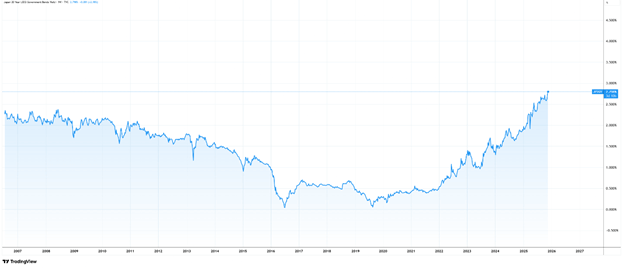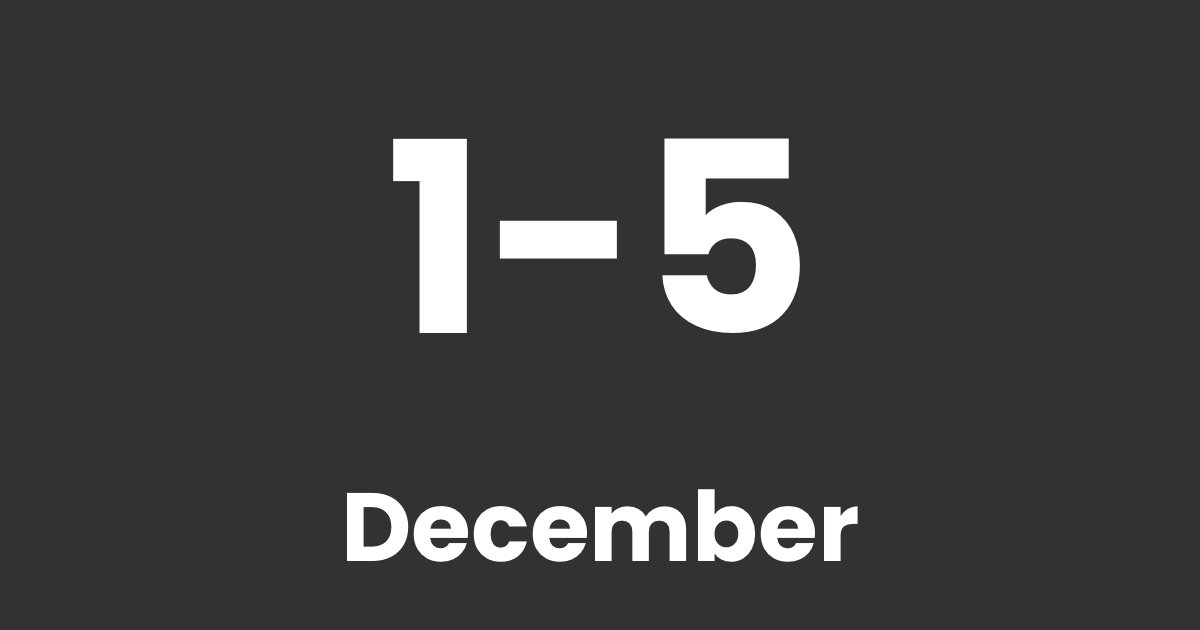Japan just sent a shockwave through global bond markets. The country’s 20-year government bond yield surged to 2.75%. This is the highest level ever recorded, signaling a decisive break from the ultra-low rate regime that shaped asset prices and carry trade for over three decades.
Back in the early 1990s, James Carville, former advisor to President Bill Clinton, gave the now immortalized comment to the Wall Street Journal.
“I used to think if there was reincarnation, I wanted to come back as the president or the pope or a .400 baseball hitter, but now I want to come back as the bond market. You can intimidate everybody.”
The global debt market is indeed a relentless force. And for a nation like Japan, built on cheap borrowing, the shift cuts directly into its structural foundations.
In debt, But How Much?
With government debt standing at 263% of GDP, or roughly $10.2 trillion, higher rates create a compounding problem. Japan’s debt-service bill, which was manageable when yields hovered near zero, is now set to rise sharply.
At today’s levels, annual interest costs could rise from approximately $162 billion to $280 billion over the next decade, accounting for nearly 38% of government revenue. No major economy has sustained anything similar without either defaulting, restructuring, or inflating the burden away.

Japan’s 20-Year bond, 2007-Present, Source: TradingView
The bond selloff is tied to a broader reassessment of the Bank of Japan’s policy path. Markets now expect at least one more rate increase as early as December. With inflation hovering above the BOJ’s 2% target and wage pressures proving persistent, the central bank is being forced toward normalization faster than it hoped. Higher yields, however, risk pulling capital back into Japan at the worst possible moment for global markets.
The yen carry trade, long a staple of global leverage and reaching more than $1.2 trillion at its peak, might cause significant volatility. As the yen strengthens due to rising yields, leveraged bets against it will begin to unwind.
Foreign Asset Reserves Might Dwindle
Japanese institutions hold roughly $3.2 trillion in foreign assets, including $1.13 trillion in US Treasuries. For decades, they invested abroad because domestic yields offered no return. Yet, with the domestic 20-year yield at 2.75%, the math is changing.
After hedging, US Treasuries deliver negative returns for Japanese buyers. Analysts estimate that as much as $500 billion could be repatriated over the next 18 months if the yield gap tightens further, pushing global borrowing costs higher even if the Federal Reserve remains on hold.
Brake And Accelerator – At The Same Time
The panic in the bond market has been exacerbated by the latest move from Japan’s new government. Following a 1.8% annualized contraction in Q3 2025—ending an 18-month growth streak—the administration might have panicked.
To counter the slowdown, the government unveiled a stimulus package exceeding 17 trillion yen (approx. $110 billion). While aimed at reviving economic momentum and countering rising prices, this liquidity injection is opposed to what the bond market requires.

Japan’s national debt breakdown, Source: BoJ / Market Unpack
"Japan is attempting to hit the accelerator and the brake simultaneously," said Yoshimasa Maruyama, chief market economist at SMBC Nikko Securities.
"They are printing 17 trillion yen to stoke growth, while the BOJ is being forced to hike rates to defend the currency. You cannot do both without breaking something."
Going Where No Economy Has Even Gone Before
Japan has been here before, though never at this scale. Each instance of stimulus in recent decades weakened the currency and caused capital to flow outward. Risk assets typically responded positively, including digital currencies.
Yet the central question remains. How sustainable is Japan’s current fiscal path?
Debt is rising faster than nominal GDP. Borrowing costs are climbing. And aging demographics mean fewer taxpayers and higher social spending.
The BOJ already owns more than half of all JGBs in circulation, limiting its room to step back without destabilizing markets.
The yen — traditionally a safe-haven currency — is caught in this structural tension. Historically, investors bought yen during crises, betting that Japan’s current-account surplus, political stability, and deflationary tendencies would maintain its value. But the equation is shifting.
As the fiscal outlook deteriorates and yields rise, the yen’s safe-haven status becomes harder to defend. The risk is that Japan may transition from a safe-haven supplier to a funding crisis candidate if markets lose confidence.
That dynamic has led some analysts to consider whether the Singapore dollar could partially replace the yen’s traditional role. Singapore maintains a strong external balance sheet, a tightly managed currency, and low political risk.
Its Monetary Authority uses a managed-float regime — not interest rates — to control inflation, making the SGD less exposed to debt dynamics than the yen. Market participants already treat the SGD as a “mini-haven” during regional volatility. It lacks the depth and liquidity of the yen, but its credibility advantage is growing.
Still, a full replacement is unlikely in the near term. The yen’s deep funding markets, massive derivatives ecosystem, and entrenched role in global hedging strategies give it structural advantages. But if Japan’s fiscal trajectory continues unchecked, global investors may increasingly diversify their defensive currency allocations away from the yen toward the SGD and the Swiss franc.
Note: Any opinions expressed in this article are not to be considered investment advice and are solely those of the authors. Singapore Forex Club is not responsible for any financial decisions based on this article's contents. Readers may use this data for information and educational purposes only.







